Five ways to make your lab more sustainable
Can we make science more sustainable?
The University of Toronto is a world-class institution where transformative research and innovation happen. It consistently ranks in the top five universities in the world for research output and has more than 1,000 labs.
Typical university lab buildings consume 40 to 60% of all energy on campus.
Here are five ways you can make your next scientific breakthrough sustainable.
1. Save energy
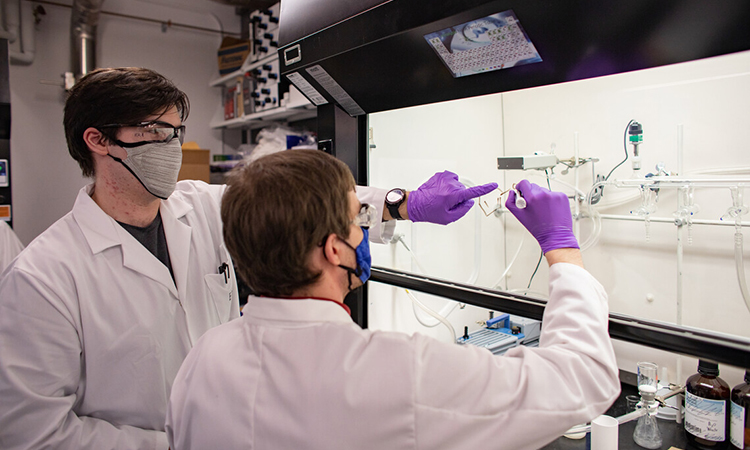

Did you know that the average life science lab consumes three times the energy of an equivalent-sized office space?
Simple actions can maximize energy savings.
- Use timers to manually shut off equipment.
- Display reminder stickers to shut off lights.
- Turn off monitors and screens.
- Conduct freezer cleanouts frequently and adjust the temperature of ultra-low temperature freezers if possible.
- Share materials with other labs.
- Close the fume hood sash when not in use. An open fume hood uses 3.5 homes worth of energy due to the large volume of air that needs to be heated, cooled, and moved through. Lab users should always work with the fume hood sash at the lowest possible position. This is important for energy savings and safety.
- Use the energy savings rebate program. The energy savings rebate program makes energy-efficient products more accessible to people across Ontario.
2. Watch water use
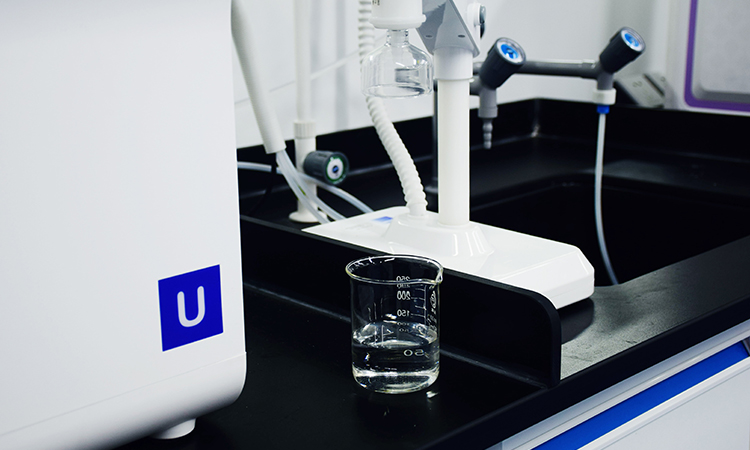

At some universities, water use in labs accounts for up to 50% of total water consumption. Wet labs are the most water-intensive spaces on campus. Labs across the St. George campus can work together to decrease water consumption.
- Only run dishwashers when they’re full.
- Ensure that corrosive and hazardous materials are collected for disposal.
3. Keep waste minimal
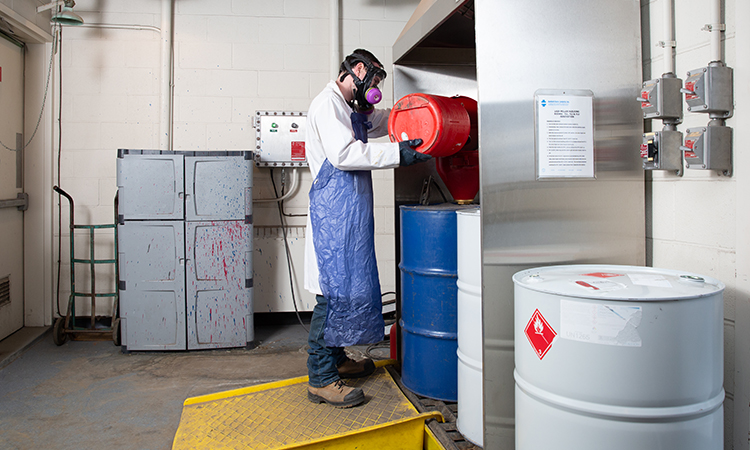

It’s estimated that every year plastic waste from laboratories could cover an area 23 times the size of Manhattan ankle deep. We can all do our part and keep waste in the lab minimal.
- Ensure gloves are used only when necessary/appropriate or thinner gloves (whenever safe) are used.
- Reuse packaging when shipping from the lab.
- Ensure corrosive and hazardous materials are collected for disposal.
- Ensure sustainable equipment and materials are purchased.
- Ensure plastic use is minimized and replaced with glass or other materials. Be sure to r Our Environmental Protection Services and Hazardous Construction Materials teams support the collection, disposal, and removal of hazardous waste safely and efficiently.
4. Practice green chemistry
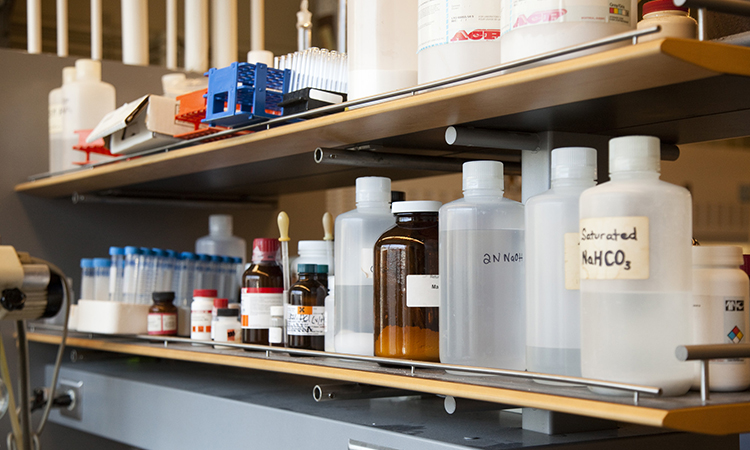

Green chemistry is an approach to chemistry that aims to maximize efficiency and minimize hazardous effects on human health and the environment.
Let’s take action to help lessen the impact of chemicals on our environment and health.
- Prioritize chemical waste prevention.
- Choose the least energy-intensive chemical route.
- Consult best practice procurement guides prior to ordering new lab materials and equipment. Consult the 12 principles of green chemistry.
5. Get certified!
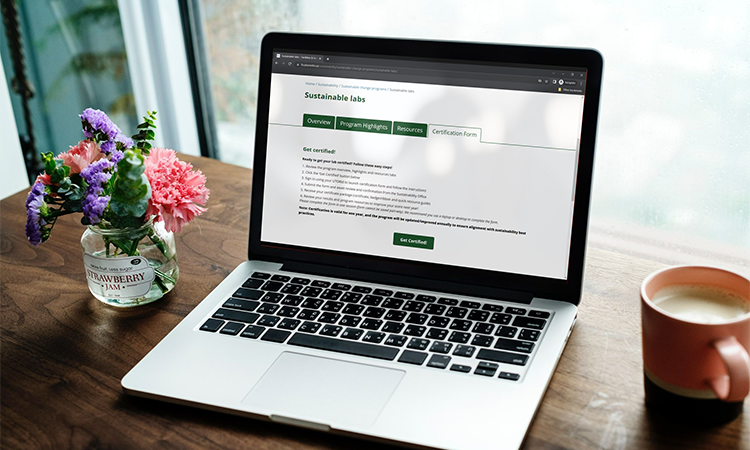

How is your lab doing?
The Sustainability Office has lots of information on its website about how lab users can maximize sustainability.
Check it out, track your progress and discover innovative solutions that will ensure the best possible outcomes for your lab and the planet.
When you’re ready, fill out the certification form.
